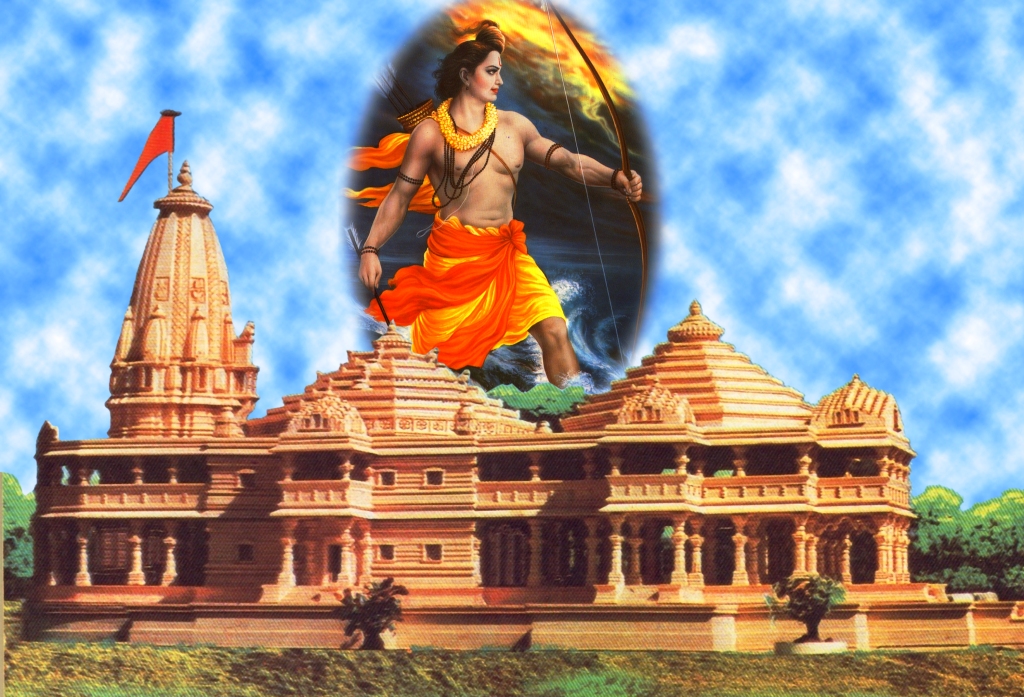Rama Janma Bhoomi is where Lord Rama was said to have taken birth. There is a small Lord Rama temple here. At this location there used to be the Babri Moseque, which was constructed in the 15th century by the Moghuls.
The mosque was destroyed in 1992, and at the present time there are plans to built a grand Rama Temple here. Also known as Saketa in ancient times, Ayodhya is really centuries old.
It was the capital of the kingdom of Kosala, of which Rama (the seventh incarnation of Vishnu, the Hindu Preserver of the Universe), the hero of the Ramayana, was the most important king.
There are many holy ghats along its banks. Bathing in these ghats, it is believed, absolves people of their sins. Ram Ghat, which is also known as Swarga Dwara, is the most famous one amongst these.
Lakshman Ghat is another important bathing ghat which is considered to be sacred, as Lakshman, Ramas brother, is said to have bathed at this ghat
Ram Janmabhoomi temple is believed by many Hindus to be the birth place of Rama, the 7th avatar of Vishnu in Hinduism.The Ramayana states that the location of Rama's birthplace is on the banks of the Sarayu river in the city of Ayodhya in Uttar Pradesh.
There is a paucity of actual historical evidence to support the claim regarding the precise location. From 1528 to 1853 (the year of the first riot regarding the birthplace), the Babri Mosque became a place of worship for Muslims.
From 1853 to 1949, separate areas were earmarked for both Hindus and Muslims to worship. The Mosque was destroyed in 1992 when a political rally developed into a riot involving 150,000 people.
The genesis of the rally existed in the movement that was launched in 1984 by the Vishwa Hindu Parishad to "reclaim" the site for Hindus by erecting a temple dedicated to the infant Rama (Ramlalla).
Do:
- Do pray your Ishta Devata before pilgrimage to Temple.
- Do contact Temple Devasthanam information centre for enquiry, temple information and for Pooja details etc.
- Do reserve your travel and accommodation at Temple well in advance.
- Do bath and wear clean clothes before you enter the temple.
- Do concentrate on God and Goddess inside the temple.
- Do maintain silence and recite your Istamantram to yourself inside the temple.
- Do observe ancient custom and traditions while in Temple.
- Do respect religious sentiments at Temple.
- Do deposit your offerings in the hundi only.
Don't s:
- Do not come to Temple for any purpose other than worshipping of God and Goddess.
- Do not smoke at Temple.
- Do not consume alcoholic drinks at Temple.
- Do not eat non-vegetarian food in the Kshetram.
- Do not approach mediators for quick Darshanam. It may cause inconvenient to others.
- Do not carry any weapon inside the temple.
- Do not wear any head guards like helmets, caps, turbans and hats inside the temple premises.
- Do not perform Sastanga Pranama inside the Sanctum Sanctorum.
- Do not take much time while performing Sparsa Darshanam to God in Garbhagriha.
- Do not buy spurious prasadams from street vendors.
- Do not encourage beggars at Temple.
- Do not spit or create nuisance in the premises of the temple.
